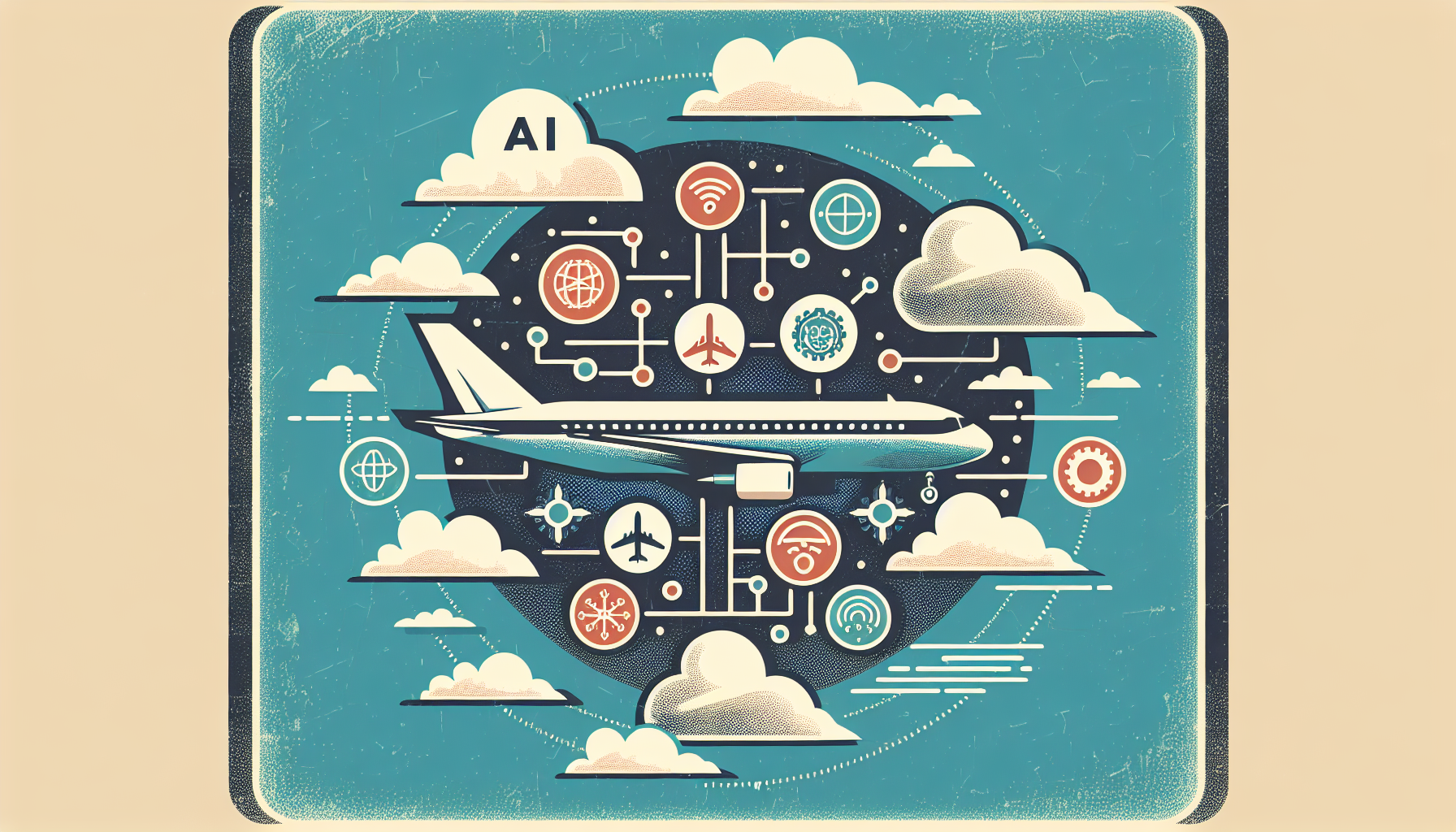The advent of Artificial Intelligence (AI) in the aviation realm has heralded a new era of safety, efficiency, and dependability. To appreciate the game-changing impact AI has had on aviation safety, we must explore its influence on weather forecasting, air traffic management, and predictive maintenance.
AI in Weather Forecasting
Accurate weather forecasting is crucial for aviation safety. Traditional methods often fail to keep pace with rapidly shifting conditions like turbulence or storms, but AI has transformed this field. With AI, weather predictions are now real-time and remarkably precise.
AI systems can analyze massive datasets swiftly, empowering flight crews with timely decisions. For example, AI forecasts turbulence with nearly 90% accuracy, enhancing safety and passenger comfort.
- Real-time Updates: AI provides instantaneous weather insights, allowing pilots to adjust flight routes to circumvent dangerous conditions.
- Route Optimization: By evaluating weather data, AI suggests the most fuel-efficient paths, reducing costs and consumption.
- Extreme Weather Forecasting: AI detects severe conditions early, allowing safer navigational choices to mitigate storm and turbulence risks.
Advanced Air Traffic Management
AI is redefining air traffic management by bolstering efficiency and safety. Here’s how AI influences this vital domain:
- Predictive Analytics and Decision-Making: AI algorithms anticipate congestion and propose optimal routes, curbing delays and fuel use. With real-time data processing, controllers make informed, swift decisions.
- Automation of Routine Tasks: AI handles repetitive tasks, freeing human controllers to tackle complex scenarios, thus lowering the risk of human error.
- Conflict Prediction: AI assesses patterns and historical data to foresee potential aircraft risks, enhancing safety evaluations and conflict predictions.
Predictive Maintenance and Aircraft Health
Predictive maintenance is another realm where AI is a pioneer. By predicting equipment issues before they arise, AI aids in timely repairs, reducing aircraft downtime.
- Aircraft Health Monitoring Systems (AHMS): With AI enhancement, these systems have improved early failure detection by 40%, enabling proactive maintenance.
- Unscheduled Maintenance Reduction: AI has cut down these events by 25%, ensuring enhanced reliability and safety.
Wind Shear and Hazard Avoidance
AI aids in crafting advanced avoidance systems for dangerous conditions like wind shear. The Wind Shear Safety Advisor (WSSA) is a conceptual system that blends AI with modern estimation theory to help pilots evade or endure hazardous wind shear encounters.
- Real-Time Decision Aiding: WSSA uses varied and dynamic data sources to offer timely warnings and guidance, utilizing rule-based methods, Bayesian networks, and multivariable estimation.
Global Initiatives and Collaborations
The global push to incorporate AI into aviation safety is driven by significant endeavors and partnerships.
- Airbus Fly AI Report: Airbus is at the forefront, exploring AI’s potential to elevate aviation safety, as detailed in their Fly AI Report.
- EASA AI Roadmap: The European Union Aviation Safety Agency (EASA) is crafting an AI Roadmap to standardize the safe and effective integration of AI in aviation.
- FAA Continuous Monitoring: The Federal Aviation Administration (FAA) is pioneering adaptive AI regulations and performance monitoring to ensure AI systems remain safe and compliant.
Future Potential and Sustainability
The future of AI in aviation is promising, anchored in its ability to augment safety and efficiency. With advancements like quantum computing, AI will further improve forecasting, making air travel safer and more efficient.
- Sustainability: By optimizing routes based on weather data, AI helps airlines curtail fuel consumption and carbon emissions, supporting more eco-friendly aviation practices.
In summary, AI’s integration into aviation marks a pivotal shift towards greater safety, efficiency, and operational reliability. From precision in weather forecasting to sophisticated air traffic management and predictive maintenance, AI is elevating aviation safety standards. As the industry continues to embrace and innovate with AI technologies, the future of flying is becoming safer, more efficient, and increasingly reliant on AI’s profound insights.

Leave a Reply